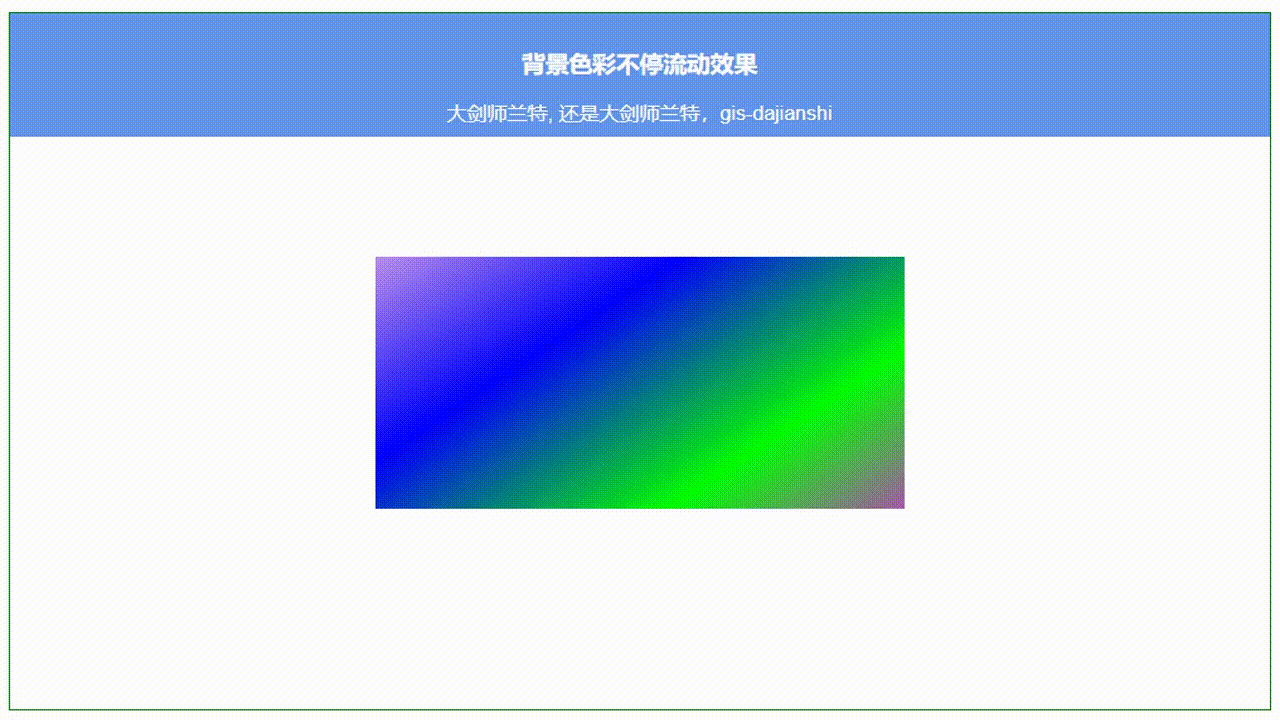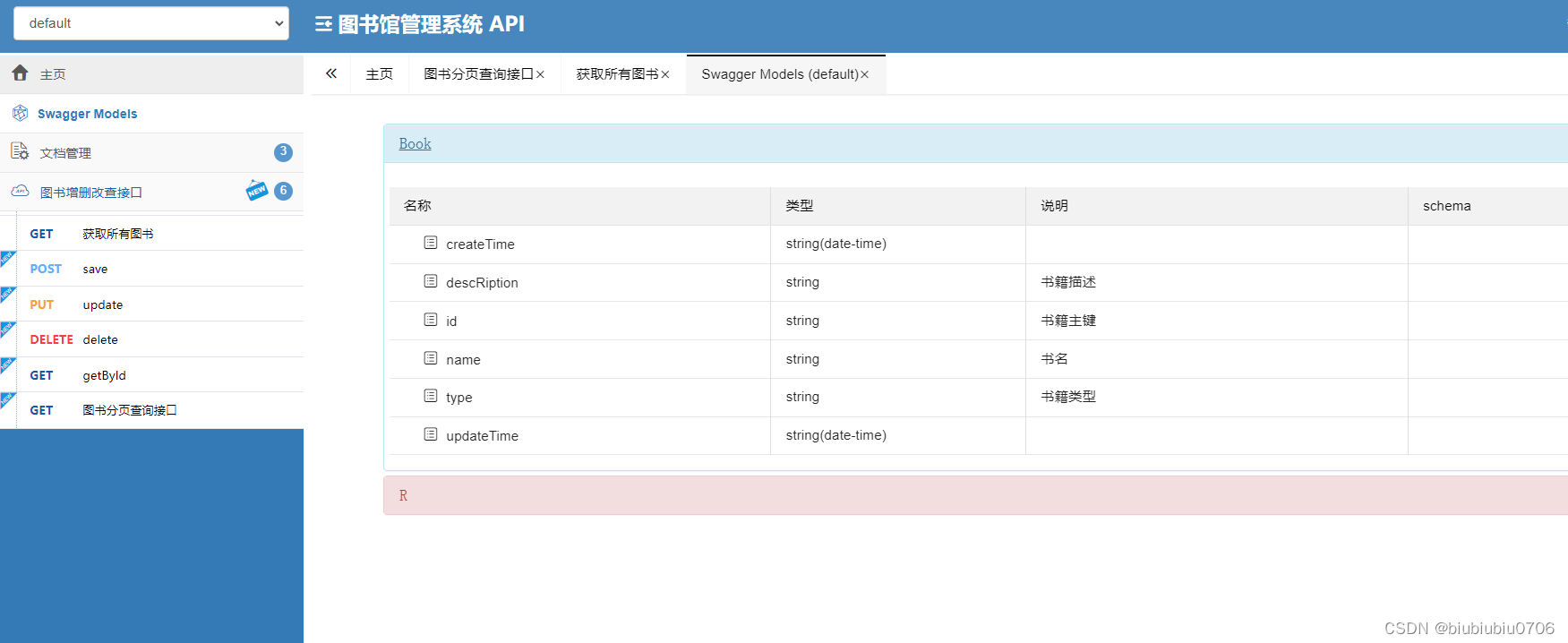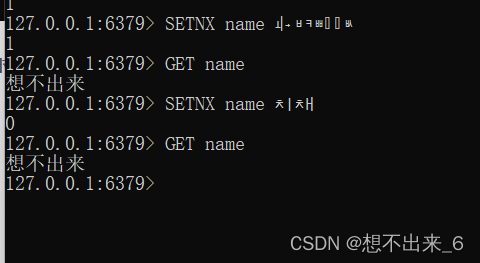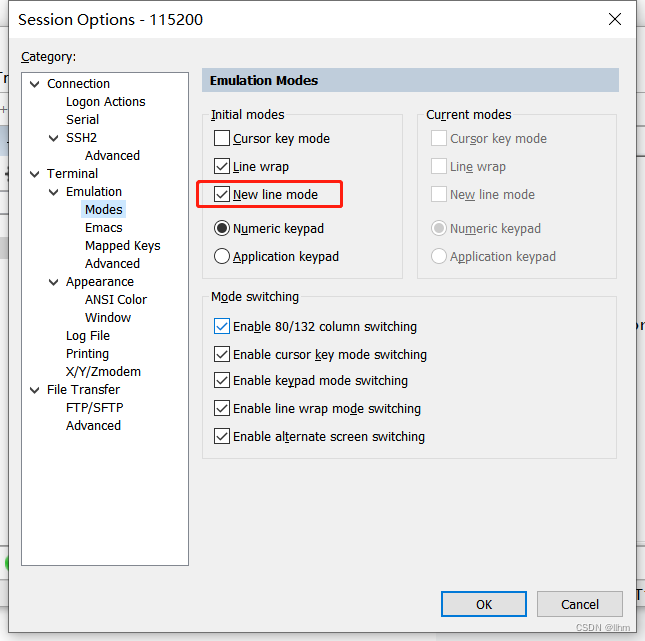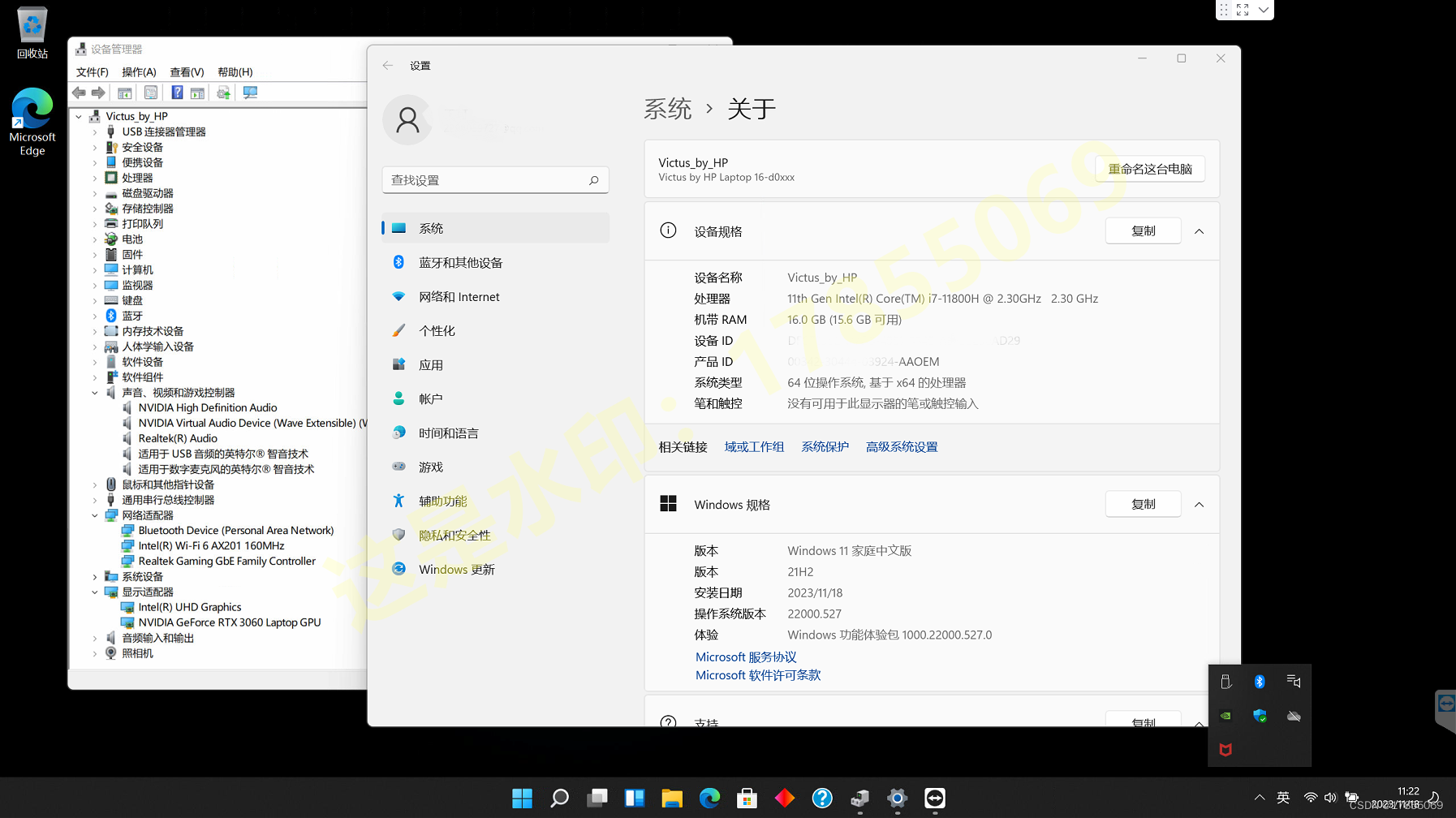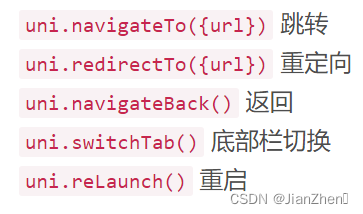目录
- IOC接口
- ApplicationContext 详解
- IOC操作Bean管理
- 基于xml方式
- 基于xml方式创建对象
- 基于xml方式注入属性
- 使用set方法进行注入
- 通过有参数的构造进行注入
- p 名称空间注入(了解)
- 基于xml方式注入其他类型属性
- xml 注入数组类型属性
IOC接口
- IOC思想基于IOC容器完成,IOC容器底层就是对象工厂
- Spring提供IOC容器实现的两种方式:
- ApplicationContext :BeanFactory接口的子接口,提供更多更强大的功能,一般由开发人员使用
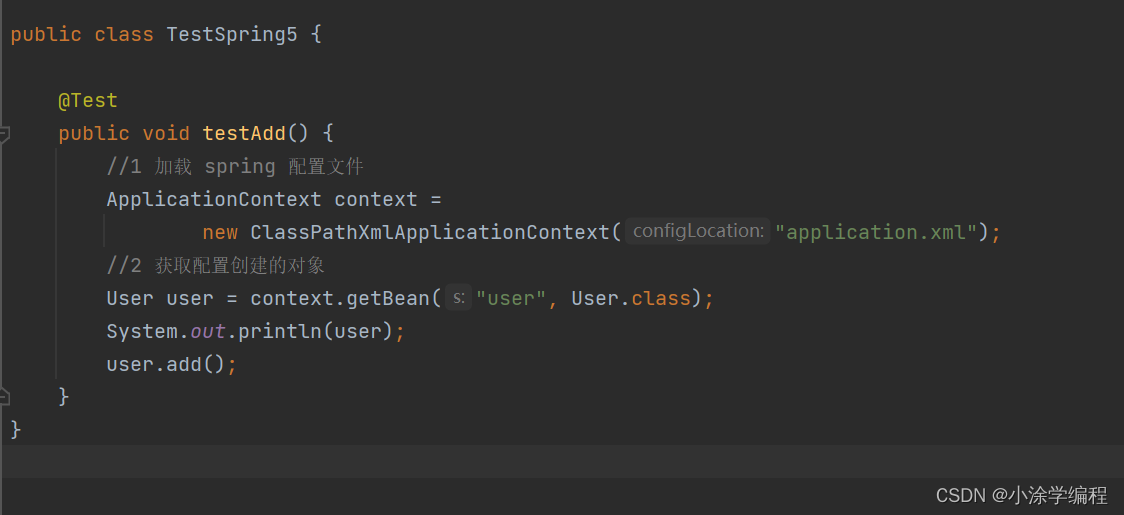
- BeanFactory :IOC容器基本实现,是Spring里面内部使用接口,不提供开发人员进行使用

- BeanFactory 在加载配置文件的时候,它不会把里面的对象创建,它只会加载我们的配置文件,当在获取的时候它才会创建对象。
什么时候用的时候才开始创建对象 - ApplicationContext 在加载配置文件的时候,就会把配置文件对象进行创建
- ApplicationContext :BeanFactory接口的子接口,提供更多更强大的功能,一般由开发人员使用
ApplicationContext 详解
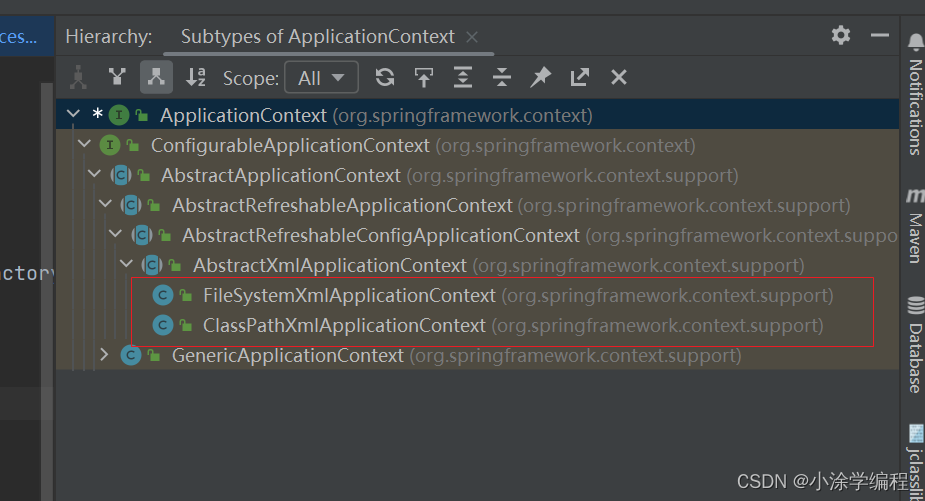
- FileSystemXmlApplicationContext : 配置文件为系统盘的文件
- ClassPathXmlApplicationContext : 配置为类路径下的文件
IOC操作Bean管理
- Bean管理指的是两个操作
- ① Spring创建对象 :Spring通过Xml解析再通过工厂模式来进行创建对象
- ② Spring 注入属性 :Spring可以使用类似于Set对象的操作对对象或者字注入值
- Bean管理操作有两种方式
- ①基于xml配置文件方式实现
- ②基于注解方式实现
基于xml方式
基于xml方式创建对象

① 在spring配置文件中,使用bean标签,标签里面添加对应属性,就可以实现对象创建
② 在bean标签有很多属性,介绍常用的属性
- id属性 : 获取对象中的唯一的标识
- class属性 :类全路径(包类路径)
- name属性 :name的作用与id一样,name属性可以添加特殊符号
③ 创建对象的时候,默认也是执行无参的构造方法完成对象的创建
基于xml方式注入属性
DI : 依赖注入,就是注入属性
使用set方法进行注入
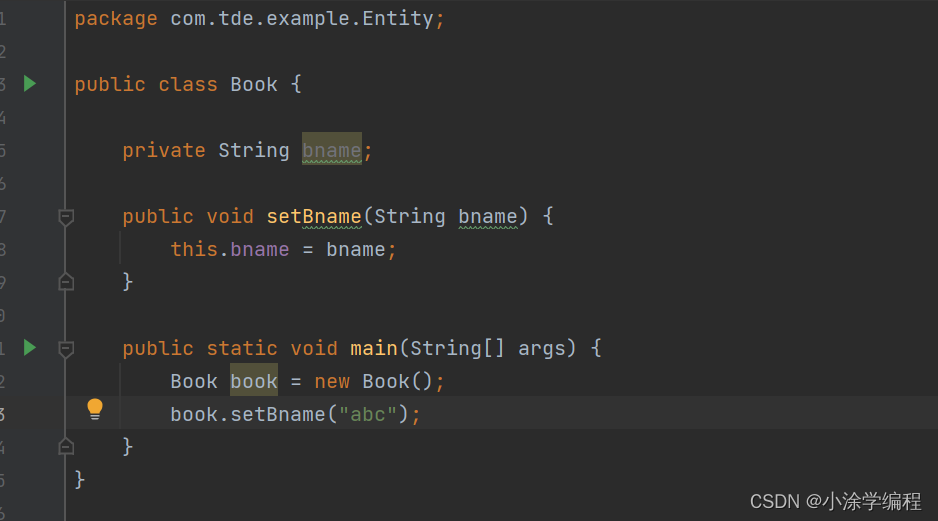
在spring配置文件配置对象创建,配置属性注入(使用Set方式注入)
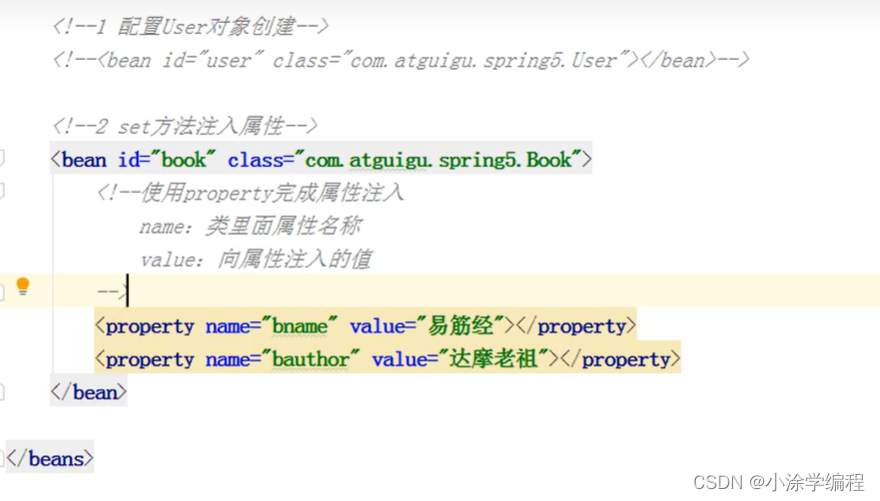
通过有参数的构造进行注入
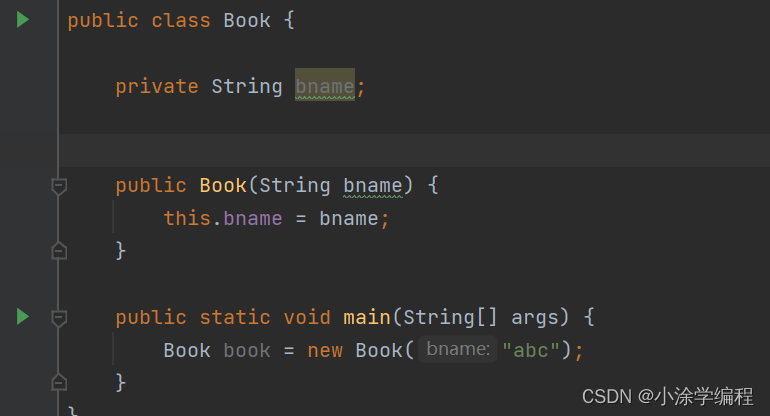
在spring配置文件配置对象创建,配置属性注入(使用有参数构造注入)

p 名称空间注入(了解)
使用 p 名称空间注入,可以简化基于 xml 配置方式
<?xml version="1.0" encoding="UTF-8"?>
<beans xmlns="http://www.springframework.org/schema/beans"xmlns:xsi="http://www.w3.org/2001/XMLSchema-instance"xmlns: p="http: //www. springframework. org/schema/p //添加 p 名称空间在配置文件中
http://www.springframework.org/schema/beans/spring-beans.xsd">//进行属性注入,在 bean 标签里面进行操作<bean id="book" class="com. atguigu. spring5.Book" p:bname="九阳神功"
p: bauthor="无名氏">×/bean></beans>
基于xml方式注入其他类型属性
- 字面量
- null 值
<property name="address"><null/>
</property>
- 属性值包含特殊符号
<!--属性值包含特殊符号1 把<>进行转义 < >2 把带特殊符号内容写到 CDATA
-->
<property name="address"><value><![CDATA[<<南京>>]]></value>
</property>
- 注入属性-外部 bean (外部调用对象的方法)
- 创建两个类 ,service 类和 dao 类
- 在 service 调用 dao 里面的方法
- 在 spring 配置文件中进行配置
public class UserService {//创建UserDao类型属性,生成set方法private UserDao userDao;public void setUserDao(UserDao userDao) {this.userDao = userDao;}public void add() {System.out.println("service add...............");userDao.update();}
}
public class UserDao {public void update() {System.out.println("dao update...........");}
}
-
通过springxml配置操作
<?xml version="1.0" encoding="UTF-8"?>
<beans xmlns="http://www.springframework.org/schema/beans"xmlns:xsi="http://www.w3.org/2001/XMLSchema-instance"xsi:schemaLocation="http://www.springframework.org/schema/beans http://www.springframework.org/schema/beans/spring-beans.xsd"><!--1 service和dao对象创建--><bean id="userService" class="com.atguigu.spring5.service.UserService"><!--注入userDao对象name属性:类里面属性名称ref属性:创建userDao对象bean标签id值--><property name="userDao" ref="userDaoImpl"></property></bean><bean id="userDaoImpl" class="com.atguigu.spring5.dao.UserDaoImpl"></bean>
</beans>
@Test
public void testBean1() {//1 加载spring配置文件ApplicationContext context =new ClassPathXmlApplicationContext("bean2.xml");//2 获取配置创建的对象UserService userService = context.getBean("userService", UserService.class);userService.add();}
- 注入属性-内部 bean (内部属性包含对象)
① 一对多关系:部门和员工一个部门有多个员工,一个员工属于一个部门部门是一,员工是多
②在实体类之间表示一对多关系,员工表示所属部门,使用对象类型属性进行表示
部门类
//部门类
public class Dept {private String dname;public void setDname(String dname) {this.dname = dname;}@Overridepublic String toString() {return "Dept{" +"dname='" + dname + '\'' +'}';}
}
员工类
//员工类
public class Emp {private String ename;private String gender;//员工属于某一个部门,使用对象形式表示private Dept dept;//生成dept的get方法public Dept getDept() {return dept;}public void setDept(Dept dept) {this.dept = dept;}public void setEname(String ename) {this.ename = ename;}public void setGender(String gender) {this.gender = gender;}public void add() {System.out.println(ename+"::"+gender+"::"+dept);}
}<?xml version="1.0" encoding="UTF-8"?>
<beans xmlns="http://www.springframework.org/schema/beans"xmlns:xsi="http://www.w3.org/2001/XMLSchema-instance"xsi:schemaLocation="http://www.springframework.org/schema/beans http://www.springframework.org/schema/beans/spring-beans.xsd"><!--内部bean--><bean id="emp" class="com.atguigu.spring5.bean.Emp"><!--设置两个普通属性--><property name="ename" value="lucy"></property><property name="gender" value="女"></property><!--设置对象类型属性--><property name="dept"><bean id="dept" class="com.atguigu.spring5.bean.Dept"><property name="dname" value="安保部"></property></bean></property></bean>
</beans>
@Testpublic void testBean2() {//1 加载spring配置文件ApplicationContext context =new ClassPathXmlApplicationContext("application.xml");//2 获取配置创建的对象Emp emp = context.getBean("emp", Emp.class);emp.add();}

- 注入属性-级联赋值 (都可以达到注入的作用)
第一种方法 直接赋值一个对象
<!--级联赋值-->
<bean id="emp" class="com.atguigu.spring5.bean.Emp"><!--设置两个普通属性--><property name="ename" value="lucy"></property><property name="gender" value="女"></property><!--级联赋值--><property name="dept" ref="dept"></property>
</bean>
<bean id="dept" class="com.atguigu.spring5.bean.Dept"><property name="dname" value="财务部"></property>
</bean>
第二种方法 赋值里面的一个属性值
//生成dept的get方法
public Dept getDept(){
return dept:
}
<!--级联赋值-->
<bean id="emp" class="com.atguigu.spring5.bean.Emp"><!--设置两个普通属性--><property name="ename" value="lucy"></property><property name="gender" value="女"></property><!--级联赋值--><property name="dept" ref="dept"></property><property name="dept.dname" value="技术部"></property>
</bean>
<bean id="dept" class="com.atguigu.spring5.bean.Dept"><property name="dname" value="财务部"></property>
</bean>xml 注入数组类型属性
- 注入数组类型属性
创建类,定义数组、list、map、set 类型属性,生成对应 set 方法
package com.tde.example.Entity;import java.util.Arrays;
import java.util.List;
import java.util.Map;
import java.util.Set;public class Student {//1 数组类型属性private String[] courses;//2 list集合类型属性private List<String> list;//3 map集合类型属性private Map<String, String> maps;//4 set集合类型属性private Set<String> sets;public void setSets(Set<String> sets) {this.sets = sets;}public void setCourses(String[] courses) {this.courses = courses;}public void setList(List<String> list) {this.list = list;}public void setMaps(Map<String, String> maps) {this.maps = maps;}public void test() {System.out.println(Arrays.toString(courses));System.out.println(list);System.out.println(maps);System.out.println(sets);}
}
<?xml version="1.0" encoding="UTF-8"?>
<beans xmlns="http://www.springframework.org/schema/beans"xmlns:xsi="http://www.w3.org/2001/XMLSchema-instance"xsi:schemaLocation="http://www.springframework.org/schema/beans http://www.springframework.org/schema/beans/spring-beans.xsd"><!--1 集合类型属性注入--><bean id="stu" class="com.atguigu.spring5.collectiontype.Stu"><!--数组类型属性注入--><property name="courses"><array><value>java课程</value><value>数据库课程</value></array></property><!--list类型属性注入--><property name="list"><list><value>张三</value><value>小三</value></list></property><!--map类型属性注入--><property name="maps"><map><entry key="JAVA" value="java"></entry><entry key="PHP" value="php"></entry></map></property><!--set类型属性注入--><property name="sets"><set><value>MySQL</value><value>Redis</value></set></property></bean>
</beans>@Test
public void testCollection1() {ApplicationContext context =new ClassPathXmlApplicationContext("bean5.xml");Stu stu = context.getBean("stu", Stu.class);stu.test();
}
2. 在集合里面设置对象类型值
<!--创建多个 course 对象-->
<bean id="course1" class="com.atguigu.spring5.collectiontype.Course"><property name="cname" value="Spring5 框架"></property>
</bean>
<bean id="course2" class="com.atguigu.spring5.collectiontype.Course"><property name="cname" value="MyBatis 框架"></property>
</bean>
<!--注入 list 集合类型,值是对象--><property name="courseList"><list><ref bean="course1"></ref><ref bean="course2"></ref></list>
</property>//学生所学多门课程
private List<Course> courseList;
public void setCourseList(List<Course> courseList) {this.courseList = courseList;
}

- 把集合注入部分提取出来
- 在 spring 配置文件中引入名称空间 util
- 使用 util 标签完成 list 集合注入提取
Book类
package com.atguigu.spring5.collectiontype;import java.util.List;public class Book {private List<String> list;public void setList(List<String> list) {this.list = list;}public void test() {System.out.println(list);}
}
<?xml version="1.0" encoding="UTF-8"?>
<beans xmlns="http://www.springframework.org/schema/beans"xmlns:xsi="http://www.w3.org/2001/XMLSchema-instance"xmlns:util="http://www.springframework.org/schema/util"xsi:schemaLocation="http://www.springframework.org/schema/beans http://www.springframework.org/schema/beans/spring-beans.xsdhttp://www.springframework.org/schema/util http://www.springframework.org/schema/util/spring-util.xsd"><!--1 提取list集合类型属性注入--><util:list id="bookList"><value>易筋经</value><value>九阴真经</value><value>九阳神功</value></util:list><!--2 提取list集合类型属性注入使用--><bean id="book" class="com.atguigu.spring5.collectiontype.Book"><property name="list" ref="bookList"></property></bean>
</beans>
@Test
public void testCollection2() {ApplicationContext context =new ClassPathXmlApplicationContext("bean6.xml");Book book1 = context.getBean("book", Book.class);Book book2 = context.getBean("book", Book.class);book1.test();book2.test();System.out.println(book1);System.out.println(book2);
}
